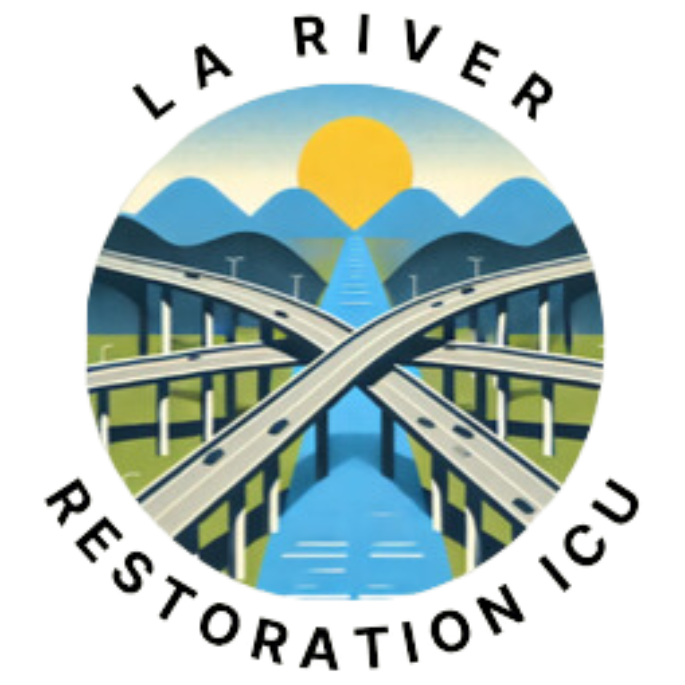Habitat Restoration:
Reviving the
Los Angeles River Ecosystem
Introduction: The Los Angeles River, once a vital artery of biodiversity, has been confined and altered by urban development. The Habitat Restoration section of LARiver.Restoration.ICU is dedicated to chronicling efforts to rewild this iconic waterway, reintroducing native species, restoring wetlands, and fostering a vibrant ecosystem that supports both wildlife and community recreation.
The Vision for Habitat Restoration
Our mission is to transform concrete channels into thriving habitats. This means:
- Rewilding native ecosystems by planting indigenous flora and reestablishing wetland areas.
- Creating wildlife corridors that support fish, birds, and mammals.
- Improving water quality and soil health to foster resilient ecosystems.
Key Restoration Projects
Reach 8A Fish Passage Project
- A pilot project creating steelhead fish passages, inset channels, and resting pockets for migrating fish.
- Enhancing biodiversity by reintroducing native vegetation and reducing water velocity for safe fish passage.
- Learn more from the City of Los Angeles Fish Passage Project.
Community-Led Rewilding Efforts
- Partnering with nonprofits like Friends of the Los Angeles River (FoLAR), The River Project, and Los Angeles Waterkeeper.
- Volunteer-driven cleanups, native planting events, and wetland restoration.
East Los Angeles Water Quality Improvement Projects
- East LA Sustainable Median Stormwater Capture Project: Converting medians into green spaces that capture and filter stormwater, reducing urban runoff and enhancing local green spaces.
- Dominguez Gap Wetlands: Utilizing constructed wetlands to naturally treat stormwater and urban runoff, creating habitats for wildlife while improving water quality.
- Green Infrastructure Initiatives: Implementing bioswales, permeable pavements, and urban forestry projects to intercept and treat stormwater before it reaches the river.
Lower LA River Habitat Restoration Projects
- Restoring wetlands and riparian zones along the Lower LA River, focusing on biodiversity hotspots and public green spaces.
- Collaborating with community groups to implement native plantings, erosion control, and pollution reduction initiatives.
- Monitoring water quality and wildlife corridors to ensure long-term ecosystem health.
Pinpointing Pollution Sources and Planning for Remediation:
To effectively improve water quality, we must identify specific pollution sources and prioritize targeted remediation efforts. This includes:
- Water Quality Monitoring: Establishing additional monitoring stations along the river to trace pollutants and identify high-risk inflows.
- Source Control & Pollution Prevention: Focusing on upstream interventions in East LA to reduce pollutants at the source. However, concentrating solely on one area could limit the scope of improvement.
- Comprehensive Remediation Planning: Recognizing that pollution enters the river from multiple sources, from Commerce to Long Beach, and developing a coordinated, watershed-wide strategy.
The Challenge of Partial Solutions:
While focusing on East LA could improve water quality locally, this approach risks only cleaning a mile or two of the river at a time. A piecemeal strategy could take decades to significantly impact the entire river. Therefore, a broader plan is needed, addressing multiple pollution hotspots simultaneously and coordinating efforts across municipalities to maximize impact.
Get Involved:
Get Involved:
- Volunteer: Join habitat restoration events and river cleanups.
- Support: the Chronolog Installation Initiative and future restoration projects.
- Document the Change: Share your river photos and stories on social media using #LARiverRestoration.
External Resources:
Let’s work together to restore the Los Angeles River ecosystem... one wetland, one fish passage, and one community cleanup at a time.
